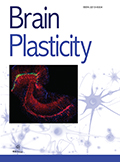Authors: Fernandez, A.M. | Santi, A. | Torres Aleman, I.
Article Type:
Review Article
Abstract:
The search for the cause of Alzheimer’s disease (AD), that affects millions of people worldwide, is currently one of the most important scientific endeavors from a clinical perspective. There are so many mechanisms proposed, and so disparate changes observed, that it is becoming a challenging task to provide a comprehensive view of possible pathogenic processes in AD. Tauopathy (intracellular neurofibrillary tangles) and amyloidosis (extracellular amyloid plaques) are the anatomical hallmarks of the disease, and the formation of these proteinaceous aggregates in specific brain areas is widely held as the ultimate pathogenic mechanism. However, the triggers of this dysproteostasis process remain
…unknown. Further, neurofibrillary tangles and plaques may only constitute the last stages of a process of still uncertain origin. Thus, without an established knowledge of its etiology, and no cure in the horizon, prevention – or merely delaying its development, has become a last-resort goal in AD research. As with other success stories in preventive medicine, epidemiological studies have provided basic knowledge of risk factors in AD that may contribute to understand its etiology. Disregarding old age, gender, and ApoE4 genotype as non preventable risk factors, there are diverse life-style traits – many of them closely related to cardiovascular health, that have been associated to AD risk. Most prominent among them are diet, physical and mental activity, exposure to stress, and sleep/wake patterns. We argue that all these life-style factors engage insulinergic pathways that affect brain function, providing a potentially unifying thread for life-style and AD risk. Although further studies are needed to firmly establish a link between faulty insulinergic function and AD, we herein summarize the evidence that this link should be thoroughly considered.
Show more
Keywords: Insulin peptides, life-style, risk of Alzheimer disease, diet, physical and mental activity, stress, sleep/wake cycle
DOI: 10.3233/BPL-180071
Citation: Brain Plasticity,
vol. 4, no. 1, pp. 3-15, 2018





